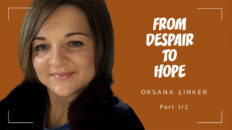Image: freepik.com – AI Suite.
Amidst castle ruins, bibles and train stations, you can sense what this land once bore: a spiritual wealth fed by the light of heaven.
By Stephan Kobes
A nation on the move – Germany around 1900
At the beginning of the 20th century, Germany was a nation in transition. While industrialization was profoundly changing the country, the German Empire was gaining strength under the rule of Kaiser Wilhelm II. Cities were growing, railroad networks were being expanded and the country was developing into one of Europe’s leading economic centers. In the midst of the industrial boom, Germany presented itself as a country with strong values, an orderly life and a pronounced sense of beauty.
Visit of a prophetess – Ellen White travels through the empire
Germany was a magnet for many travelers – including the American author Ellen White, who visited Germany during her travels through Europe. Ellen White, one of the most influential authors of her time, was not only known for her numerous articles and books, but also for her astute observations and deep faith. Her works were recognized far beyond the borders of her home country.
Even the German Empress Auguste Viktoria, wife of Kaiser Wilhelm II, read one of her books and expressed her appreciation in a friendly letter. Ellen White recorded this special incident on January 23, 1904:
“Only recently I received word that a copy of one of my books had been very favorably received by the German Empress, and that she had written a kind letter expressing her appreciation of it. To the Lord be all the glory.” (1SM 101 / 19LtMs, Ms. 8, 1904, par. 25)
Auguste Viktoria was not only known as a “patron of the church”, but also shaped the spiritual life of the empire with her social and religious commitment. The fact that she not only read a work by Ellen White, but also publicly praised it, shows the extraordinary reach and significance of this author’s writings – even in the highest circles of the empire.
Through Germany with an alert eye
But Ellen White did not only experience Germany through letters and reader reactions – she traveled through the country herself, saw it with her own eyes and became acquainted with its people, its order and its peculiarities. She recorded her impressions with a keen eye and a keen sense of what was special. She also described many an affectionate or bizarre peculiarity with subtle humor and a twinkle in her eye.
Pictures of a country – and what they reveal about the people
Ellen White’s long journey through the German Empire took her through “fertile plains and populous towns” (HS 176). The country was “a varied land, with small villages and towns, mountains, rivers, forests, and cultivated land … In summer it seems as if the lowlands were covered with a ribbon of fine embroidery of almost every shade of green and brown” (HS 175) She wrote approvingly about strikingly beautiful areas: “The landscape is magnificent and picturesque, and must be indescribably beautiful in summer.” (HS 223). In doing so, she acknowledged the immense amount of work it must have taken to harness the full potential of the country’s natural assets (see HS 224)
She described “extensive and heavily cultivated plains … with their groves and orchards and all kinds of crops, separated by green hedges and dotted with villages and towns.” (HS 224.225)
The land had always been considered extremely valuable in Germany. “In this densely populated country, every available meter of land has been cultivated for centuries.” (HS 176) “On the hills and in the valleys there are groves, orchards and gardens.” (HS 223) “Not one square meter of land is wasted.” (HS 224)
Even in areas where it was not at all easy to make the land usable, no work or effort was spared. “Wherever the land is too barren and too mountainous to be used for any other purpose, and wherever there are rivers that serve as transportation routes, it is used for planting forests … In many countries they are the property of the government and are tended as carefully as gardens.” (HS 176)
Inns like palaces, trains like salons: a look at comfort, travel and infrastructure
Tourism was also of considerable importance in Ellen White’s time in Germany: “As this country is the destination of tourists and those seeking recreation, great attention is paid to everything that provides comfort and entertainment.” (HS 223)
On her trip, Ellen White saw “large and elegant hotels surrounded by beautiful terraced grounds, groves, shrubs and flowers. And even in the smallest and most remote villages, the hotels and inns are like palaces compared to the people’s homes.” (HS 223)
Ellen White generally used public transportation on her journey. German trains “are generally clean and comfortable.” (HS 174) “Most express trains run with first, second and third class carriages, and the carriage patterns are so different that it is not uncommon to see a long train in which no two carriages are alike.” (HS 175) “The European carriage is very suitable for a comfortable night journey, provided it is not overcrowded.” (HS 174)
However, as Ellen White noted with subtle humor, travel in Germany was not quite so easy:
“In Mainz the train waited two hours, and we took the opportunity for a walk through the town. When we returned to the station, our luggage, which we had left in the waiting room, was nowhere to be seen. After a long search, we found it with a station attendant, who told us that it had to be guarded. We then had to pay one man a mark (25 cents) for taking the luggage out of the waiting room, another a franc (20 cents) for guarding it and another a franc for loading it into the wagon. This is an example of what one can constantly encounter when traveling in Europe.” (HS 225)
But she enjoyed her stay in Germany noticeably despite such incidents.
Of castles, palaces and fortresses: history you can touch
On her journey through Germany, she noticed numerous palaces and castles, monuments from a bygone era, reminders of an eventful history. As she traveled by train along the Rhine, she said:
“Close beside us flows the beautiful Rhine, as smooth and even as glass, and on its calm surface little steamboats glide up and down.” (HS 223)
“The railroad runs along the banks of the river, winding around the mountains and offering a beautiful view of the river all along the way. Mountains rise on both sides, sometimes sloping gently down to the bank, sometimes rising steeply from the surface of the water. Palaces and towers are dotted along the banks of the river, adorning every towering site along its course. From almost every cliff or hilltop, an old castle or ruined fortress looks down on the lovely valley.” (HS 223)
These old fortresses reminded them of the country’s vibrant history: “Here and there we see an old castle perched on the highest and most inaccessible hills … These old fortress walls undoubtedly have an eventful history. Some of them, like Wartburg Castle, were a refuge for Protestants at the time of the Reformation. If these moss-covered walls could only tell us what happened inside their fortifications, or what took place in the mountain caves around them, we could hear the most exciting stories from the lives of the people who defended their faith … and respected the law of God above the precepts of men.” (HS 176)
Cities with spirit, history and Reformation heritage
On her journey, Ellen White naturally also stopped in some of Germany’s most famous cities. She summarized her assessment as follows:
“Frankfurt is an old-time city … It is a very rich place, and is said to have possibly more beautiful promenades than any other city in the world. A short distance from the city there are delightful villages and some famous spas.” (HS 175)
Hamburg “Hamburg, situated on the Elbe, has more than 270,000 inhabitants. It is a trading center for all of Northern Europe. It is the major import port for the German Empire, and the most important trading city on the continent. Despite its old age, Hamburg is a beautiful city.” (HS 178)
Hamburg made history as a city – as the quiet scene of a courageous step towards freedom of conscience in England: the English reformer Tyndale began to translate the New Testament into English here: “He secretly sent the Gospels of Matthew and Mark, which he had translated and printed here, to London – as the first fruits of his great work.” (HS 178)
Cologne – one of the oldest cities in northern Europe – is known for its cathedral, among other things: “Around 8 p.m. we reached … ‘Cologne’, as the Germans spell and pronounce it. We spent the night here. Our hotel was not far from the famous cathedral and we had a good view of it by moonlight. It is said to be the most magnificent Gothic building in the world.” (HS 222) “The whole building has little corner towers and statues” and this makes it a “most impressive” building (HS 222).
The two towers of the cathedral were the tallest in Europe in Ellen White’s time. “But the true spiritual heritage of this city extends far beyond the splendor of its cathedral.” (HS 222)
When Tyndale could no longer stay in Hamburg, he traveled to Cologne to “finish the printing of the New Testament in the hope of finding better opportunities here to send the work to England after its completion.” (HS 222) However, when his work was betrayed, he had to flee to Worms – “that picturesque old town which Luther inextricably linked with the history of the Reformation” (HS 225). “Here he [Tyndale] completed his great work, and England for the first time received a Bible printed in the vernacular.” (HS 222,223)
So not only Germany was blessed by a Bible translation in its own language – other countries like England also received light and truth from German soil through men like William Tyndale.
Ellen White had a heart for “Germany … with its large cities and numerous population” (Life Sketches, 304.305, 1915).
Her manner also seemed to go down well with the people.
Nocturnal encounter on the border of the empire
It was one of those icy nights that creep into your bones. Ellen White and her traveling companions were on their way back from Scandinavia to southern Europe when their train reached the border to the German Empire in the middle of the night, at around three in the morning. The air was bitterly cold. The passengers – sleepy, shivering and tired – were asked to leave the train and present themselves for customs inspection.
Mr. Kellogg, a pragmatic man, approached the customs officials and tried to plead for leniency for the ladies. After all, one of them was ill and could not get off the train under any circumstances, he explained.
“But no, that didn’t help,” wrote Ellen White. “Sick or well, we all had to appear for immigration control.” (HS 221.222)
In Germany, it seemed, rules applied to everyone.
The ladies prepared to leave the carriage. But as soon as they stepped onto the frosty platform, the officials changed their minds. “That’s enough,” they suddenly said, “you can go back.”
But that was not the end of the matter. The officers cast a suspicious glance at Ellen, who had wrapped herself in her blankets and scarves to escape the cold. Was this really a sick woman – or perhaps a bundle of smuggled goods? Suspicion arose, and so the officers approached the carriage door once more, their lanterns shining brightly as if they wanted to unravel the mystery surrounding the cloaked figure.
At that moment, Ellen straightened up quickly and said with a smile: “Here I am, gentlemen. Please, see that I am a living woman!” The officers burst into hearty laughter. Ellen White’s spontaneous appearance had clearly amused them. “All right,” they finally said in German and left the tour group alone again.
After this night-time interruption, everyone was finally able to snuggle back under their warm blankets and continue their journey unmolested.
Beauty with structure: what Germany’s order reveals about its thinking
During her trip through Germany, Ellen White became increasingly aware of how much security and order are valued in this country.
She noticed that the public good is a primary focus of German jurisprudence. Ellen White wrote approvingly, “In many states they [forests] are the property of the government and are as carefully tended as gardens.” (HS 176).
“In many places where the forests were formerly destroyed, they have been replanted with public funds.” (HS 176), she noted, emphasizing how much the Germans valued and protected their natural resources.
The German building trade also caught her attention. She praised the solid and stable construction of German houses:
“The houses are usually large, so that each one holds several families inside. They are expected to last several hundred years. They are built as solidly as possible, made of bricks or stones that are plastered on the outside … The risk of a fire spreading from one floor to the next is low. The appearance of many houses gives the impression that they come from ancient times.” (HS 175.176)
She paid no less tribute to the design of German roads:
“The roads on both sides of the Rhine are as perfect as they could possibly be made. And that is no wonder; after all, workers have labored incessantly for almost 2,000 years to build and repair them.” (HS 223,224) In order to ensure that the roads were straight, rocks had been blasted away and valleys filled in. But the result was very good, “so that – even if they run through a very mountainous landscape – they run almost as smoothly as a railroad line.” (HS 223.224)
But all this led to a deeper question: where did the power that carried this country internally come from?
The secret of the German upswing: How the Bible, Reformation and Pietism shaped a country
At the beginning of the 20th century, Germany presented itself as an up-and-coming industrial nation. The country had not only developed into a leading industrial center, but had also preserved its scenic beauty and historical splendor.
Was this visible upswing due to economic progress alone – or was there a deeper force behind it?
Germany was a country that impressed not only with its industrial and economic might, but also with the deep-rooted values of its people: Germans were known for a tireless work ethic and a strong sense of order that was reflected in all areas of life. Whether in agriculture or architecture, the precision with which the Germans shaped their country was evident everywhere.
In fact, the term “Made in Germany” became synonymous with the highest precision and quality at the beginning of the 20th century. It seems to be an irony of history that it was originally intended by the British as a warning against cheap German goods.
But where did this striving for order and excellence, which was reflected in all areas of life, come from? What was the source of this driving force that seemed to shape the whole nation?
In the search for an answer, it is worth looking at those movements that planted moral values in the hearts of the people. The Reformation (from 1517) and Pietism (from 1670) come to mind, when Germans were given the “Book of Books” in their own national language.
The Reformation made the Bible accessible to everyone. Divine love made people understand the values and ordinances of heaven.
Germany’s inner wealth: a spiritual heritage that continues to have an impact today
The real upswing began with an open book. Martin Luther’s works, which introduced people to the biblical faith, “were well received in town and country … The writings were read with great interest by rich and poor, scholars and laymen alike … Workers, soldiers, women and even children were more familiar with the teachings of the Bible than priests and scholars.” (VSL 179.180)
“This had awakened their dormant powers. It not only purified and ennobled their spiritual nature, but also imparted new vigor and energy to the mind.” (GC 195; Kaiser Wilhelm II was in possession of this book, as attested to by an inventory of his private library remaining in exile – source: https://kenniscentrumhuisdoorn.nl/library/record?q=12147 accessed on 23.03.2025)
Amidst the strife and turmoil of nations, this powerful movement astonished the world. And within a century, “the country had become highly prosperous.” (HS 176) The country became known as a nation of wealth.
Historian James Aitken Wylie notes:
“Germany was regarded as a rich country. In times of prolonged peace, the settlements had grown, the number of villages had multiplied and the flourishing fields bore witness to the excellent quality of their cultivation.”
He expresses the influence of biblical truths on the life of Germany as follows:
“The sweet breath of that morning [the Reformation] gave Germany an extraordinary moral vigor, revived its arts and economy, and filled the land with all that is good. The cities were very rich, and the country people lived in pleasant and easy circumstances.” (James Aitken Wylie, History of Protestantism Vol. 3, p. 256)
A spiritual renewal of unprecedented force revitalized not only the German economy, but also the moral foundation of the country. The resulting values shaped culture, character and community for generations – and made Germany one of Europe’s leading nations.
It was precisely these spiritually inspired values that not only gave Germany external strength, but also internal stability and cultural depth – a legacy that still resonates today.
Germany became great through invention and diligence – but its real strength lay in something deeper: It is a country that paved its paths – not just with stone, but with writing, faith and responsibility.

















